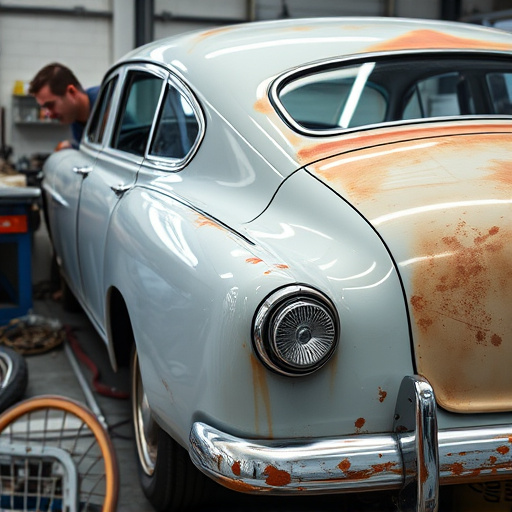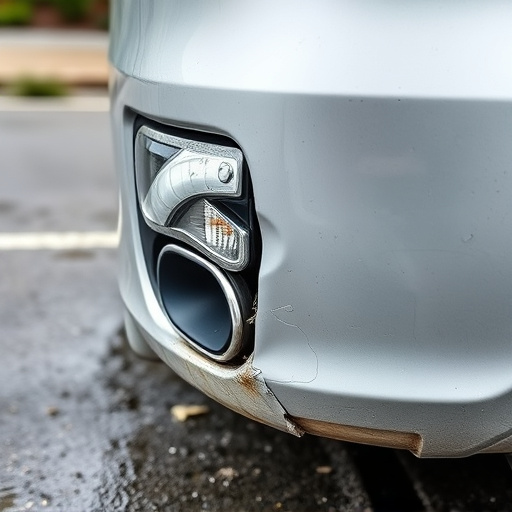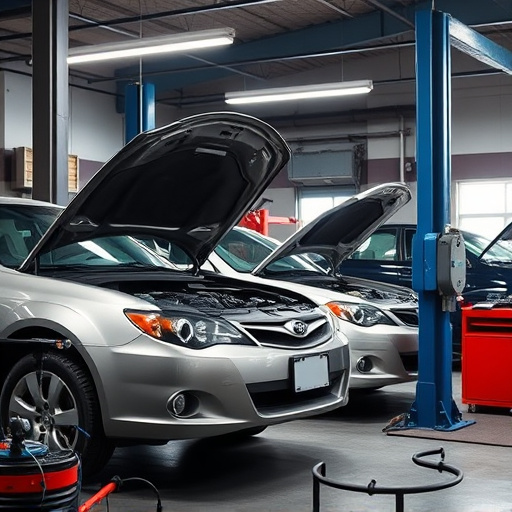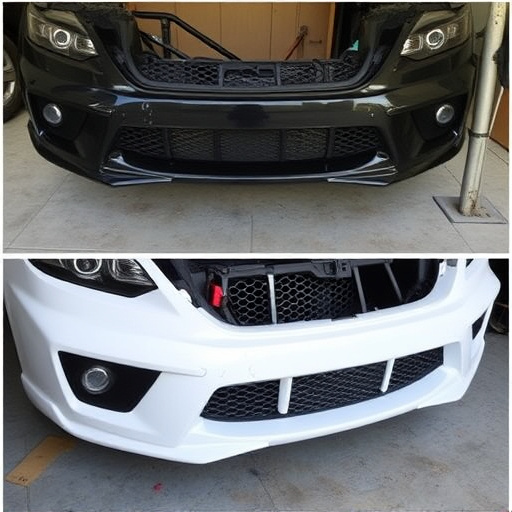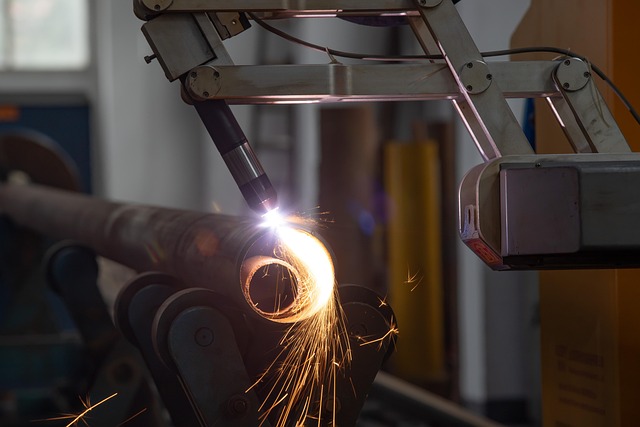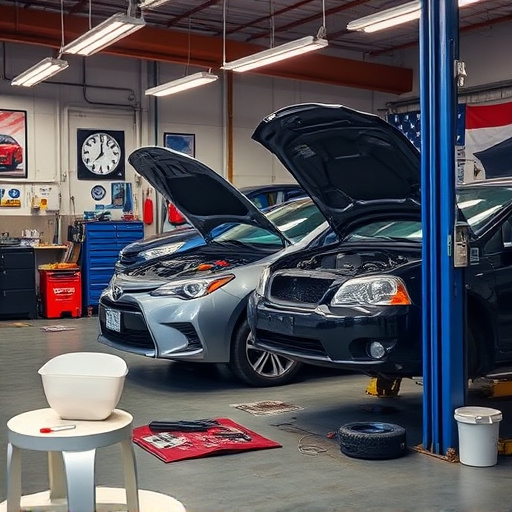The evolution of auto body repair technology has drastically changed the industry for specialists, shifting from manual labor to advanced, precision-based systems. Computer-aided design (CAD) software, robotic welders, and 3D printing have transformed repairs, ensuring structural integrity, enhancing safety with eco-friendly materials, and improving efficiency through faster diagnostic tools. These innovations enable auto body repair specialists to deliver high-quality, consistent repairs, streamlining services and boosting customer satisfaction. Despite initial investment challenges, these technologies are essential for collision centers aiming to stay competitive in today's market.
Auto Body Repair Specialists: Embracing Advanced Repair Technology
The auto body repair industry has undergone a remarkable transformation with the advent of advanced repair technology. This evolution has empowered auto body repair specialists to deliver precision and efficiency like never before. From state-of-the-art tools to innovative techniques, these advancements have revolutionized the way specialists approach repairs.
This article explores how modern technology benefits auto body repair specialists, delving into improved work processes, enhanced accuracy, and increased customer satisfaction. We also examine the challenges they face in staying at the forefront of this dynamic field.
- The Evolution of Auto Body Repair Technology
- How Advanced Tools Enhance Specialist Work
- Benefits and Challenges for Auto Body Repair Specialists
The Evolution of Auto Body Repair Technology

The evolution of auto body repair technology has been nothing short of transformative for auto body repair specialists. Traditional methods involving manual labor and rudimentary tools have given way to advanced, precision-based systems that enhance efficiency and quality. Auto frame repair, once a time-consuming and challenging task, is now facilitated by computer-aided design (CAD) software that enables specialists to map out repairs with exactness, ensuring structural integrity and precise alignment.
This digital revolution has not only streamlined the auto bodywork process but also improved safety and sustainability. Modern technology allows for the use of eco-friendly materials and techniques, reducing the environmental impact of car accidents. Auto body repair specialists now have access to advanced diagnostic tools that quickly identify issues, leading to faster turnaround times and satisfied customers. The integration of robotic systems and automated equipment further reduces human error, ensuring consistent and high-quality repairs in every project they undertake.
How Advanced Tools Enhance Specialist Work
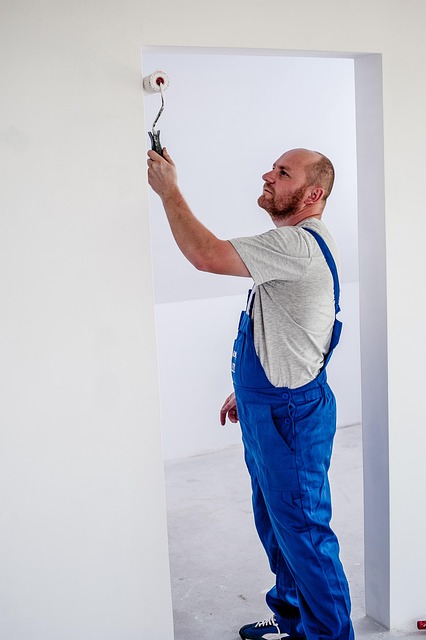
Advanced tools have revolutionized the way auto body repair specialists work, enabling them to deliver superior vehicle repair services. These cutting-edge technologies offer precision and efficiency, allowing repairs that are both faster and more effective than traditional methods. For instance, specialized equipment like robotic welders and computer-aided design (CAD) software ensure accurate measurements and seamless panel fitting, even for complex Mercedes Benz repair jobs.
The integration of these innovative tools has also enhanced the overall quality control process. With advanced scanners and diagnostic systems, specialists can quickly identify damage hidden beneath a vehicle’s surface, ensuring no remnant goes unnoticed. This meticulous approach not only guarantees impeccable auto body repair but also instills confidence in customers receiving top-tier vehicle repair services tailored to their needs.
Benefits and Challenges for Auto Body Repair Specialists

Auto Body Repair Specialists are benefiting from advanced repair technology that is revolutionizing their trade. Modern tools and techniques, such as computer-aided design (CAD) software, robotic welding, and 3D printing, enable specialists to achieve precise, high-quality repairs more efficiently than ever before. These innovations streamline the body shop services process, reduce waste, minimize costs, and enhance overall customer satisfaction.
However, adopting advanced repair technology also presents challenges for auto body repair specialists. Significant investment in equipment and training is required, which can be a financial burden, especially for smaller operations. Additionally, keeping up with rapid technological advancements demands continuous learning and adaptation to stay competitive. Despite these hurdles, the long-term benefits of advanced technology make it an increasingly vital component for any collision center looking to thrive in today’s market.
Auto body repair specialists are continually benefitting from advanced repair technology, revolutionizing their work and enhancing customer satisfaction. The evolution of tools and techniques has not only streamlined processes but also improved precision and efficiency. However, specialists face challenges in staying updated with rapidly changing technologies while ensuring they provide the best services. Embracing these advancements is crucial for auto body repair specialists to maintain their expertise and meet modern automotive standards.
